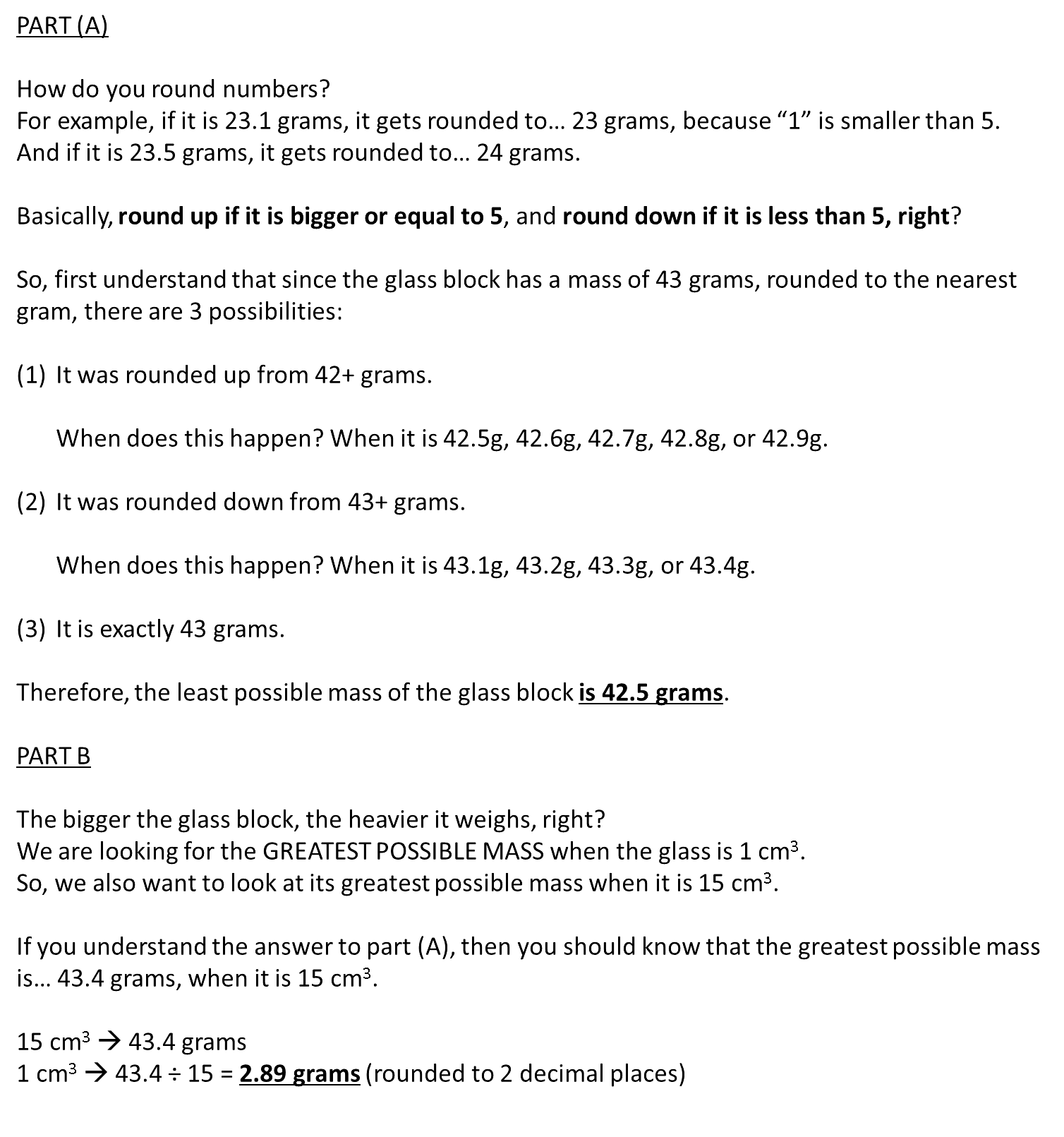Jenna's answer to Abbass's Secondary 4 E Maths Singapore question.
Sorry, had to reupload ; they can't seem to process transparent backgrounds, lol.
Part b) is incorrect.
This question is essentially asking one to find the greatest possible density of the glass based on the information given in the question.
In order to achieve the greatest possible mass of 1 cubic centimetre of the glass,(which is effectively the same as finding the greatest possible density of the glass in terms of mass per cm³)
the mass of the whole glass block should be the greatest possible. Next, the volume of the glass block should be the smallest possible. As density = mass/volume, this would give us the greatest possible density.
Based on the question, the glass block can have a smallest possible volume of 14.5cm³ (which is rounded up to 15cm³). The idea here is the same as part a). To take it as 15cm³ would be incorrect since the question says it's correct to the nearest cm³ , not exactly 15cm³.
The greatest possible mass is actually 43.4999999.... g , where the 9 is recurring. It is still less than 43.5g so it would be rounded down to 43g.
Therefore, the greatest possible mass per cubic centimetre is 43.49999999... g /14.5cm³
= 2.999999999..... g per cm³
≈ 3.00 g per cm³ (3 s.f)
(Note that the greatest possible mass is correct to 3 significant figures here. It cannot actually be 3.00 g per cm³ as that would mean the mass is 43.5g, which would have been rounded up to 44g as the nearest gram)
This question is essentially asking one to find the greatest possible density of the glass based on the information given in the question.
In order to achieve the greatest possible mass of 1 cubic centimetre of the glass,(which is effectively the same as finding the greatest possible density of the glass in terms of mass per cm³)
the mass of the whole glass block should be the greatest possible. Next, the volume of the glass block should be the smallest possible. As density = mass/volume, this would give us the greatest possible density.
Based on the question, the glass block can have a smallest possible volume of 14.5cm³ (which is rounded up to 15cm³). The idea here is the same as part a). To take it as 15cm³ would be incorrect since the question says it's correct to the nearest cm³ , not exactly 15cm³.
The greatest possible mass is actually 43.4999999.... g , where the 9 is recurring. It is still less than 43.5g so it would be rounded down to 43g.
Therefore, the greatest possible mass per cubic centimetre is 43.49999999... g /14.5cm³
= 2.999999999..... g per cm³
≈ 3.00 g per cm³ (3 s.f)
(Note that the greatest possible mass is correct to 3 significant figures here. It cannot actually be 3.00 g per cm³ as that would mean the mass is 43.5g, which would have been rounded up to 44g as the nearest gram)
Yes, you're absolutely right. I did not notice that the question stated that the volume was an estimate. I thought it was a certain 15cm3. My bad.


